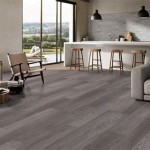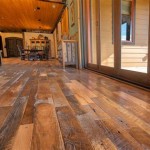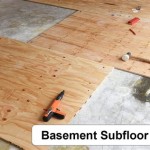How Do You Install Vinyl Plank Flooring On A Wall?
Vinyl plank flooring, originally designed for floors, has become a popular wall covering due to its durability, water resistance, and wide variety of styles. Installing vinyl plank flooring on a wall is a relatively straightforward process that can dramatically enhance a room's aesthetic. This article will guide you through the necessary steps and considerations for a successful installation.
Preparing the Wall
Proper wall preparation is crucial for a smooth and lasting vinyl plank installation. The wall surface must be clean, dry, and level. Begin by removing any existing wall coverings such as wallpaper, loose paint, or protruding nails. Patch any holes or imperfections with spackling compound and sand smooth once dry. For walls with significant irregularities, consider installing a layer of thin plywood or underlayment to create a more level surface. This extra step will significantly improve the final appearance and prevent issues with the vinyl planks adhering correctly. Cleaning the wall thoroughly with a mild detergent and allowing it to dry completely is the final step in preparation. This removes any dust or residue that could interfere with the adhesive.
Choosing the Right Adhesive
Selecting the appropriate adhesive is vital for a secure and long-lasting installation. While some vinyl planks come with a self-adhesive backing, most require a separate adhesive. Construction adhesive designed for vinyl flooring is typically recommended. It provides a strong bond and can withstand the weight of the planks. For walls in high-moisture areas like bathrooms, consider using a waterproof construction adhesive for added protection against moisture damage. Always follow the manufacturer's instructions for application and drying times. It is also advisable to test the adhesive in an inconspicuous area to ensure compatibility with both the wall and the vinyl planks.
Installation Techniques
The installation process begins with measuring and cutting the vinyl planks to the desired lengths. A miter saw provides the cleanest and most accurate cuts, but a utility knife and straight edge can also be used. When measuring, account for any trim or molding that will be installed around the edges of the wall. Starting at the bottom of the wall, apply the adhesive to the back of the first plank according to the manufacturer's instructions. Carefully position the plank against the wall, ensuring it is level and flush with the adjacent wall or corner. Use a rubber mallet or a block of wood and a hammer to gently tap the plank into place, ensuring a firm bond with the adhesive. Continue installing subsequent planks, working your way up the wall. Stagger the end joints of the planks for a more visually appealing and structurally sound installation. Maintaining a consistent spacing between planks is also crucial. Small spacers can be used to ensure uniformity.
Cutting Around Obstacles
Walls often have obstacles like electrical outlets, light switches, or window frames. Accurately measuring and cutting the vinyl planks to fit around these obstacles is essential for a professional-looking finish. Use a template or cardboard cutout to trace the shape of the obstacle onto the vinyl plank. Carefully cut along the traced lines using a utility knife or jigsaw. For intricate cuts, a rotary tool with a cutting attachment can offer greater precision. Test the fit of the cut plank before applying adhesive to ensure a snug and accurate fit around the obstacle.
Finishing Touches
Once all the planks are installed, allow the adhesive to cure completely according to the manufacturer’s instructions. Installing trim or molding around the edges of the wall provides a finished look and conceals any gaps. Choose trim that complements the style of the vinyl planks and the overall room décor. Caulk any gaps between the trim and the wall to create a seamless and professional appearance. Cleaning the installed vinyl planks with a damp cloth removes any dust or debris accumulated during the installation process. Avoid using harsh chemicals or abrasive cleaners, which can damage the vinyl surface.
Maintaining Your Vinyl Plank Wall
Vinyl plank walls are relatively low maintenance. Regular dusting or wiping with a damp cloth is usually sufficient to keep them clean. For tougher stains or spills, use a mild detergent and water solution. Avoid using abrasive cleaners or scouring pads, which can scratch the surface. With proper care and maintenance, your vinyl plank wall will provide years of beauty and durability.

How To Install Vinyl Plank Flooring On Walls Europine

How To Install Vinyl Plank Flooring Anything

Vinyl Plank Installation Tips For Doorways Halls Walls And Closets

How To Horizontally Install Pergo Laminate Flooring On Your Walls

A Beginner S Guide To Installing Vinyl Plank Flooring Dumpsters Com

Installing Vinyl Plank Flooring How To Fixthisbuildthat

How To Install Vinyl Plank Flooring On Walls Europine

Diy Wood Accent Wall Using Vinyl Planks Love Renovations

Install Vinyl Plank From A Hallway Into Room No Transition Strip

How To Install Vinyl Plank Flooring Step By Our Aesthetic Abode
See Also







